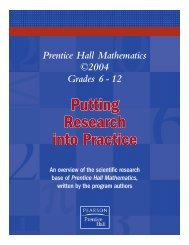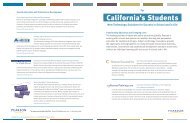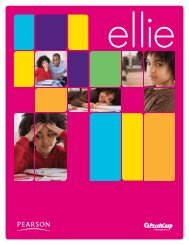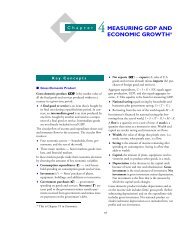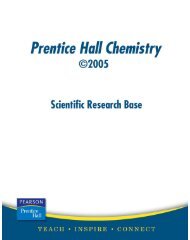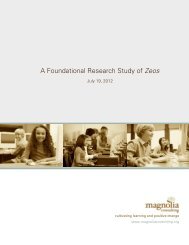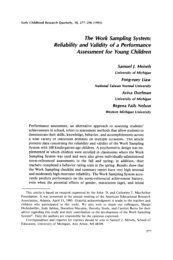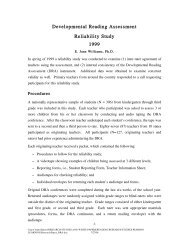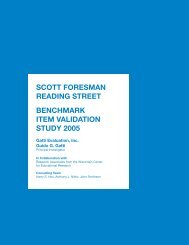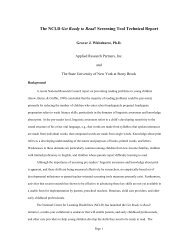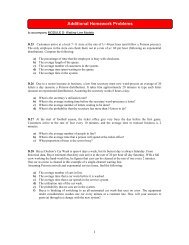Pearson Successmaker Math Efficacy Study 2009-10 Final Report
Pearson Successmaker Math Efficacy Study 2009-10 Final Report
Pearson Successmaker Math Efficacy Study 2009-10 Final Report
You also want an ePaper? Increase the reach of your titles
YUMPU automatically turns print PDFs into web optimized ePapers that Google loves.
SuccessMaker <strong>Math</strong> RCT Gatti Evaluation Inc. 9-15-<strong>10</strong>The three grade levels were similar in their usage time with medians (i.e., 50 th percentile or thosestudents with usage in the center of the distribution) of 19, 18, and 17 hours logged on theprogram for 3 rd , 5 th , and 7 th grade respectively. The three grade levels also demonstratedsimilarly good productivity and success rates with their assigned SuccessMaker math tasks.Students at the center of the distribution completed well over one exercise per minute indicating,as a group, that students were on-task. All three grade levels also had median success rates in the60% to 80% range indicating that students as a group were continuously and appropriatelychallenged as they progressed through the program. Students in the 3 rd grade SuccessMakerclassrooms attempted 43 exercises every thirty minutes with a success rate of 68%, whilestudents in 5 th grade classrooms attempted 44 exercises every thirty minutes with a success rateof 68%. Seventh grade SuccessMaker students attempted 38 exercises every thirty minutes witha success rate of 63%.The research team required that each site coordinator regularly download last session reports tocheck for students that were struggling or exhibiting off-task behavior. The research team alsorequired that cumulative reports were downloaded and sent at least once a month to monitorproper program usage. The research team flagged students that were not completing at last onetask per minute or not correctly completing more than 50% of their assigned exercises. In theserare cases, flagged students were more rigorously monitored while using the program.SuccessMaker <strong>Report</strong> UsageThe program’s reporting feature was well-received by the teachers. Individual preference andteacher expectations dictated how teachers utilized information gained from the reports.SuccessMaker teachers recorded how and when they used the program’s reporting feature intheir weekly logs. The average teacher recorded utilizing the program’s reporting system in aneducationally significant way during 57% of the usage weeks (P 25 = 22%, P 75 =92%). For ourpurposes here, using the reporting system in an educationally significant way would includeusing report information to inform classroom instruction, ability grouping, state testing goals andother benchmarks, parent conferences, as well as, classroom, pull-out, and SuccessMakerintervention. Informing a teacher as to off-task behavior is an example of when reportinformation is not used in an educationally significant way.Teachers used the SuccessMaker reporting information most often to informinstruction, identify students for remediation as well as to monitor studentprogress. Teachers also used the reports to convey student progress informationto parents.A majority of the SuccessMaker teachers stated in their logs that they used the reporting systemat least once to check students’ progress (i.e., 72%), determine which students needed help whileusing the program (i.e., 75%), or to inform additional classroom instruction or practice onspecific topics (i.e., 61%). Forty-two percent, 44%, and 32% of the teachers using the reportinformation for these purposes respectively, recorded doing so on a regular basis or more thanfive times during the school year. To a lesser extent several teachers used information from thereporting system to evaluate students on state testing goals (i.e., 19%), to ability group studentsduring classroom instruction (i.e., 25%), or to provide data to parents (i.e., 19%).- 17 -



